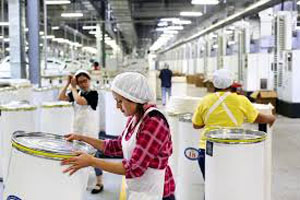
South Carolina now home to Chinese textile manufacturers
YarnsandFibers News Bureau 2015-08-25 14:00:00 – INDIAN LANDThe prospect of a sweeping Pacific trade agreement led by the United States, and excluding China, is driving Chinese yarn companies to gain a foothold in the lucrative U.S. market. China, once the epitome of cheap mass manufacturing, textile producers from formerly low-cost nations are starting to set up shop in America. It is part of a blurring of boundaries between high- and low-cost manufacturing nations that few would have predicted a decade ago.
Textile production in China is becoming increasingly unprofitable after years of rising wages, higher energy bills and mounting logistical costs, as well as new government quotas on cotton imports.
At the same time, manufacturing costs in the U.S. are becoming more competitive. In Lancaster County, where Indian Land is located, Keer has found residents desperate for work, even at depressed wages, as well as access to cheap and abundant land and energy and heavily subsidized cotton.
Keer’s $218 million mill spins yarn from raw cotton to sell to textile-makers across Asia. While Keer still spins much of its yarn in China, importing the raw cotton from America, that is slowly changing.
The reasons for Keer to move to America were incentives, land, the environment and the workers. Also in China, the whole yarn manufacturing industry is losing money while in America it’s very different, said Zhu Shanqing, Keer’s chairman.
Since Beijing and Washington resumed trade relations in the 1970s, the United States has mostly run a huge trade deficit, as Americans consumed billions of dollars in cheap electronics, apparel and other goods made in China.
But surging labor and energy costs in China are eroding its competitiveness in manufacturing. According to the Boston Consulting Group, manufacturing wages adjusted for productivity have almost tripled in China over the last decade, to an estimated $12.47 an hour last year from $4.35 an hour in 2004.
In the United States, manufacturing wages adjusted for productivity have risen less than 30 percent since 2004, to $22.32 an hour, according to the consulting firm. And the higher wages for U.S. workers are offset by lower natural gas prices, as well as inexpensive cotton and tax breaks and subsidies.
Today, for every $1 required to manufacture in the United States, Boston Consulting estimates that it costs 96 cents to manufacture in China. Yarn production costs in China are now 30 percent higher than in the United States, according to the International Textile Manufacturers Federation.
Rising costs in China are causing a shift of some types of manufacturing to lower-cost countries like Bangladesh, India and Vietnam. In many cases, the exodus has been led by the Chinese, who have aggressively moved to set up manufacturing bases elsewhere.
In recent years, the United States has started to get a bigger piece of that exodus. From 2000 to 2014, Chinese companies invested $46 billion on new projects and acquisitions in the United States, much of it in the last five years, according to a report published in May by the Rhodium Group, a New York research firm.
The Carolinas are now home to at least 20 Chinese manufacturers, including Keer and Sun Fiber, which set up a polyester fiber plant in Richburg, S.C., last year. And in Lancaster County, negotiations are underway with two more textile companies, from Taiwan and the Chinese mainland.
Market Intelligence
Ask for free sample Report

experience
Customer Base
dedicated team
Countries Served Worldwide









